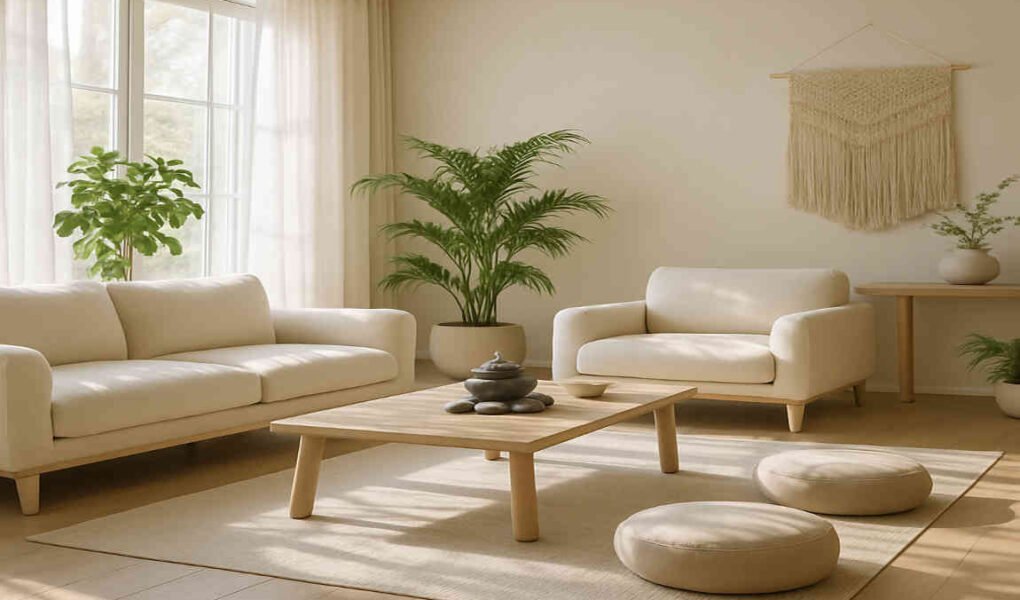It’s natural to want some quiet time after a hard day. But for too many people living in Australia’s cities, this isn’t what they get at all. They might block the rumble of traffic and the hum of appliances out of their consciousness, but they still hear these sounds, preventing them from truly relaxing. From noise-blocking windows to soft furnishings, this guide explains how to turn your home into a truly peaceful environment that fosters relaxation, focus, and great sleep.
Install Noise-Proof Windows
Installing noise proof windows may be one of the most costly tips on this list, but it’s also the most reliable and effective. Your windows are the entry point of most external noise to your home, so upgrading them to double or triple-glazing will instantly reduce its presence. The frames also matter, and you need to choose UPVC or thermally broken aluminium to get the best noise reduction results.
However, if a full replacement of your windows is too much, double-glazing can be retrofitted. This is where another pane of glass is installed behind the existing one. This can still result in a noise drop of many decibels. Adding thick curtains or blinds will also help. All of these things will also help insulate your home too, making it both cosy and quiet.
Use Solid-Core Doors
Another area where sound can enter your home is through the doors, even when they’re not open. That’s because many homes have doors which are hollow in the middle, and these don’t do a very good job at absorbing sound energy. Swapping them for solid-core doors made of sturdy materials like timber is a very effective technique for stopping sound travelling into your home or into particular rooms.
Alternatively, you can thicken your existing doors with vinyl panels. It’s important to note that both of these upgrades will make your doors heavier and more prone to slamming, so it’s a good idea to pair these upgrades with some soft-close hinges and latches.
Seal Gaps and Cracks
Sound from outside your home makes it inside by taking the same routes as heat, cold air, and dust. That means that if there are holes and cavities around your home, and in particular around window frames, you should get them filled in as soon as possible. You can buy special acoustic caulk with soundproofing properties to fill these in.
Other places to look for gaps are underneath your doors. Brush seals provide a convenient solution to both sounds and draughts which emanate from these.
Use Soft Furnishings Strategically
Sound bounces off of hard surfaces like tiles and wood, but soft materials absorb it. It’s why thick curtains were suggested as a way to complement your new windows earlier. But beyond those, having a plush sofa with cushions, throws, and other soft layers all helps too. More than just a quick home comfort fix, they’re highly effective at dampening sounds.
Having a thick, soft headboard on your bed will also help trap sounds while you sleep, as will heavy duvets and soft covers. Covering your floors in carpets or rugs is also highly effective. This not only stops noises bouncing around your home, but it prevents internal sounds like footsteps from being produced in the first place.
Limit Appliance Noise
Fridges, dishwashers, air-conditioning, and even laptops all have soft but audible hums that permeate our homes. Washing machines and tumble dryers create even more noise. These are very convenient, so of course you don’t have to give them up altogether. There are some ways to make them a bit more quiet.
For example, you can buy anti-vibration pads to go underneath washing machines and tumble dryers. This at least cancels out the buzzing sound of their high-frequency contact with the floor. Keeping extractor fans and air-conditioning units clean can reduce the amount of noise they make. Energy efficient appliances tend to be quieter than less-efficient ones too, which is another good reason to choose more environmentally friendly options.
Optimise Your Room Layouts
Yes, the placement of your furniture around a room does affect how sound travels. To start with, you can use the position of furniture to direct sounds away from reflective surfaces. In your living room, for example, you might place seats facing each other in the middle of the room. When people are speaking to each other, the sound is absorbed by the soft furnishings rather than being projected into the room or bouncing off of hard surfaces.
You can also use tall structures like wardrobes or bookcases to create a sound barrier within one room.
Incorporate Natural Sound Masking
If the ambient environmental noise from outside is really excessive and the tips so far still aren’t giving you enough relief, one effective tactic you could try is replacing it with a more pleasant sound. Running water, for example, is a sound that is known to be very relaxing to humans, lowering stress levels rather than raising them. You don’t even need a big fountain in your yard; there are desktop water features that produce a pleasant trickle.
Alternatively, you could have a rainfall soundtrack on a Bluetooth speaker playing throughout the day at a gentle volume. Plants themselves are actually surprisingly good at blocking and scattering sound, so it’s definitely worth getting some indoor plants too. They’re also very calming to look at.
Organise Wires and Cables
Tangled cords can create electromagnetic interference that you’ll hear in the background when you play sounds through your speakers or TV screen. Keep them separated and tidy. If you’re a laptop user, it can be worth vacuuming your device’s fans once in a while to keep them dust-free and quiet.
You could also place your laptop or computer on an anti-vibration mat. Closing down background processes and regularly checking for malware can also help keep them quiet.
Conclusion
There’s no single guaranteed solution for noise control inside your home. Installing noise-proof windows will have the biggest impact, but it’s even more effective when you layer all of these other improvements on top of it. They all complement one another, and there’s often other good reasons for doing them too. In the end, your home will not just be quieter, but more pleasant in general.
You may also read (home maintenance checklist key repairs and upgrades for a stress free home).




